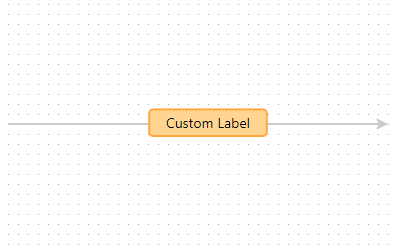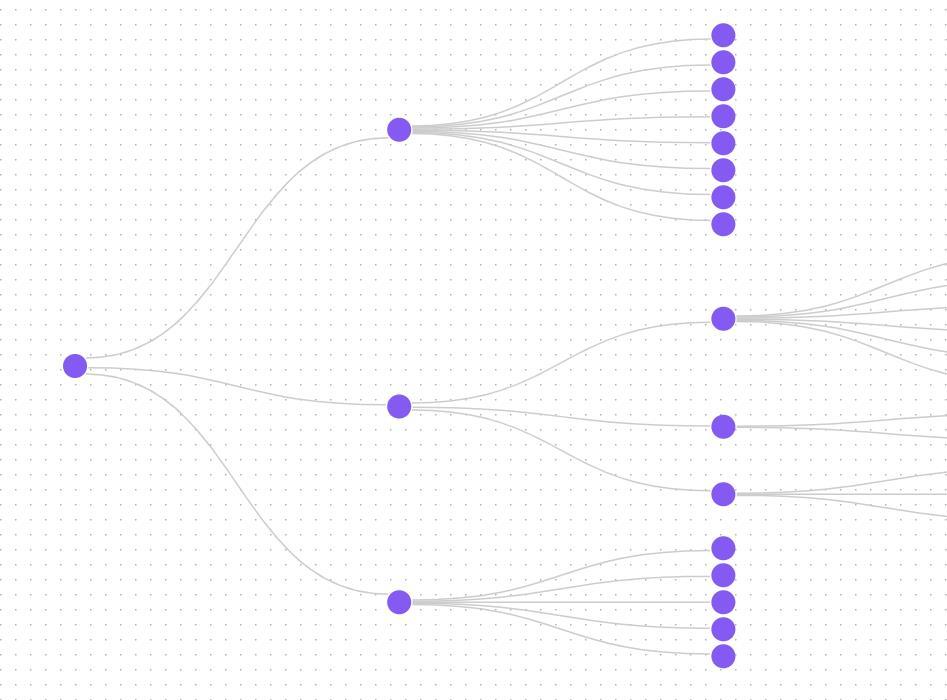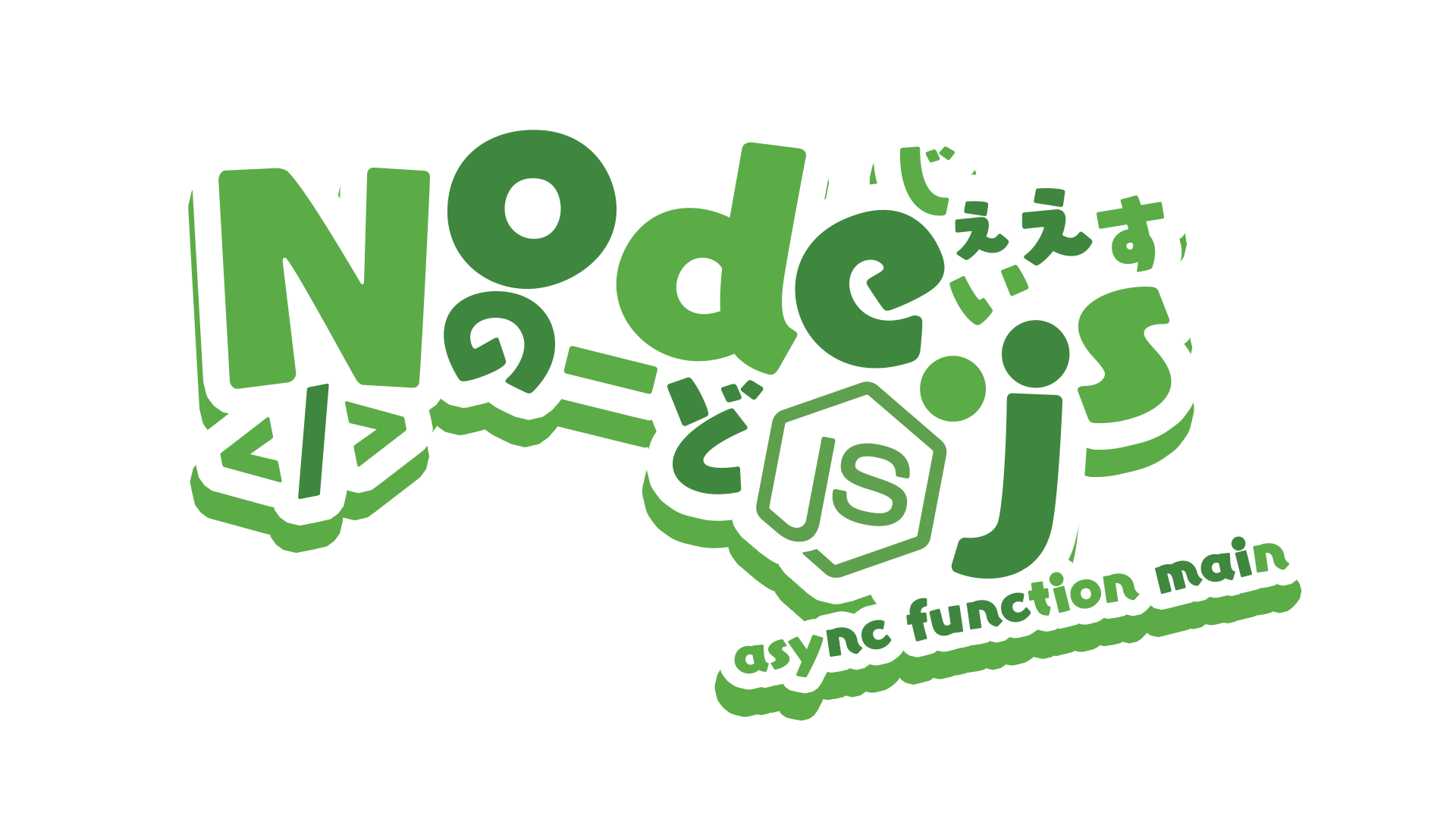使用自定义svg标签时,发现示例并没有指明如何构建复杂的svg标签,“点到为止”。同样也是需要查看源码才能熟悉如何配置复杂场景下的svg标签。以下是我为了满足业务场景配合源码学习到的关于自定义svg标签的碎片。当然写博客的时候才发现原来有详细的文档,😓
x6 自定义 SVG 标签使用碎片
定义边
官网的示例如下:官网示例
1 2 3 4 5 6 7 8 9 10 11 12 13 14 15 16 17 18 19 20 21 22 23 24 25 26 27 28 29 30 31 32 33 34 35 36 37 38 39 40 41 42 43 44 45 46 47 Graph .registerEdge ( "custom-edge-label" , { inherit : "edge" , defaultLabel : { markup : [ { tagName : "rect" , selector : "body" , }, { tagName : "text" , selector : "label" , }, ], attrs : { label : { fill : "#000" , fontSize : 14 , textAnchor : "middle" , textVerticalAnchor : "middle" , pointerEvents : "none" , }, body : { ref : "label" , fill : "#ffd591" , stroke : "#ffa940" , strokeWidth : 2 , rx : 4 , ry : 4 , refWidth : "140%" , refHeight : "140%" , refX : "-20%" , refY : "-20%" , }, }, position : { distance : 200 , options : { absoluteDistance : true , reverseDistance : true , }, }, }, }, true );
这次一点点来拆解说明
‘custom-edge-label’
定义当前特定边的名字,可以随意取名,有实际意义即可
inherit
定义当前边的继承类型,一般边定义从 edge 继承即可
defaultLabel
markup定义了标签的渲染层次结构。如果 markup 指定为一个对象,则 x6 会将其转换为数组,所以本质这里需要一个数组渲染。其每一项的结构类似:
1 2 3 4 5 6 7 8 9 10 11 12 13 { tagName : String , selector : String , ns : String , attrs : String , className : String , textContent : String , groupSelector : String | Array , style : String , chilren : Array (Markup ) },
markup中最核心的就是children属性,它使得markup约等于一个伪dom树,源码中的parseJSONMarkup()方法会BFS逐层解析并生成dom结构,并使用renderMarkup()方法渲染该dom。
svg: http://www.w3.org/2000/svg
xmlns: http://www.w3.org/2000/xmlns/
xml: http://www.w3.org/XML/1998/namespace
xlink: http://www.w3.org/1999/xlink
xhtml: http://www.w3.org/1999/xhtml
attrs
attrs是一个属性选择器组,其中的对象都是之前在markup中定义好的选择器的名字,可以选中相应的节点,其属性可以定义对应节点的属性,除了节点本身可以有的属性外,还可以定义
ref:定义关联的节点,用来设置相对属性
refWidth:根据ref关联的节点的宽度,定义宽度,百分比值
refHeight:根据ref关联的节点的高度,定义高度,百分比值
refX:根据ref关联的节点的X,定义X方向的偏移,可以是百分比值,也可以是绝对值
refY:根据ref关联的节点的Y,定义Y方向的偏移,可以是百分比值,也可以是绝对值
textAnchor:定义文本节点的水平基准点,可选start/end/middle
textVerticalAnchor:定义文本节点的垂直基准点,可选 top/bottom/middle
详见官网文档
position
position定义标签整体的位置,已知的结构如下
1 2 3 4 5 6 7 8 9 10 { distance : Number | String , options : Object , offset : Object { x : Number | String , y : Number | String }, ... }
更详尽的文档见官网API
添加边
到此,已经可以构建复杂的标签,但是这些定义都是静态的,如何与业务数据连接起来呢?看一下官网示例代码:
1 2 3 4 5 6 7 8 9 10 11 12 13 14 15 16 17 18 19 20 21 22 graph.addEdge ({ source : [170 , 160 ], target : [550 , 160 ], shape : 'custom-edge-label' , attrs : { line : { stroke : '#ccc' , }, }, labels : [ { attrs : { line : { stroke : '#73d13d' , }, text : { text : 'Custom Label' , }, }, }, ], })
其中的labels类似定义边时的defaultLabel.attrs一样可以选择到对应的节点,不知是不是有意为之,这里官网的代码中的line选择器并不能选中任何节点,如果要改变图中矩形的边框,需要把line 变成body。
业务相关
我们的项目需要引入自定义的svg图标,平时在项目中使用的是类似如下结构的vue组件
1 2 3 4 5 6 7 <template > <i class ="svg-icon-wrapper" > <svg class ="svg-icon" > <use :xlink:href ="iconName" > </use > </svg > </i > </template >
出于业务需要,我们构建的标签需要添加对应的svg。由此使用上述的定义边 ,构造类似上述组件的伪dom层次结构,代码如下
1 2 3 4 5 6 7 8 9 10 11 12 13 14 15 16 17 18 19 20 21 22 23 24 25 26 27 28 29 30 31 32 33 34 35 36 37 38 39 40 41 42 43 44 45 46 47 48 49 50 51 52 53 54 55 56 57 58 59 60 61 62 63 64 65 66 67 68 69 70 71 72 73 74 75 Graph .registerEdge ( 'custom-edge-label' , { inherit : 'edge' , defaultLabel : { markup : [ { tagName : 'foreignObject' , selector : 'foreign' , className : 'relation-line-label' , children : [ { tagName : 'body' , selector : 'body' , ns : 'http://www.w3.org/1999/xhtml' , children : [ { tagName : 'i' , selector : 'i' , ns : 'http://www.w3.org/1999/xhtml' , className : 'svg-icon-wrapper' , children : [ { tagName : 'svg' , selector : 'svg' , ns : 'http://www.w3.org/2000/svg' , className : 'svg-icon' , children : [ { tagName : 'use' , ns : 'http://www.w3.org/2000/svg' , selector : 'use' } ] } ] } ] } ] }, { tagName : 'text' , selector : 'label' } ], attrs : { label : { fill : '#303133' , fontSize : 12 , textAnchor : 'middle' , textVerticalAnchor : 'middle' , pointerEvents : 'none' }, body : { style : 'width: 24px; height: 24px; background-color: transparent;' }, foreign : { width : 24 , height : 24 , ref : 'label' , refX : '-30' , refY : '-30%' } }, position : { distance : 0.5 , offset : { y : -10 } } } }, true )
其中有以下几点值得注意:
svg需要使用foreignObject标签包裹html部分,因此需要多一层foreignObject
ns命名空间必须定义清楚,如svg的ns必须定义为http://www.w3.org/2000/svg,否则实际生成的svg标签实际是一个HtmlUnknownElement元素,同理use的ns也必须定义为该命名空间
use可以全局调用已经解析好的svg,只需要指定xlink:href属性即可,因此可以将需要的svg的名字使用addEgde参数里的labels.attrs属性指定xlink:href,如:
1 2 3 4 5 6 7 8 9 10 11 12 13 14 15 16 17 18 { source : [124 , 260 ], target : [224 , 260 ], shape : 'custom-edge-label' , labels : [ { attrs : { text : { text : '标签文本' }, use : { 'xlink:href' : '#svg-loading' } } } ], ... }
于是完成了自定义SVG标签,如图:




 Mosu is located on the shore of Mosu Lake, facing the vast Chu Sea, backed by the Yihan Mountains. Thousands of miles of Mosu Desert can not erode the Mosu Valley. Thus the Mosu Empire was established.
Mosu is located on the shore of Mosu Lake, facing the vast Chu Sea, backed by the Yihan Mountains. Thousands of miles of Mosu Desert can not erode the Mosu Valley. Thus the Mosu Empire was established.


